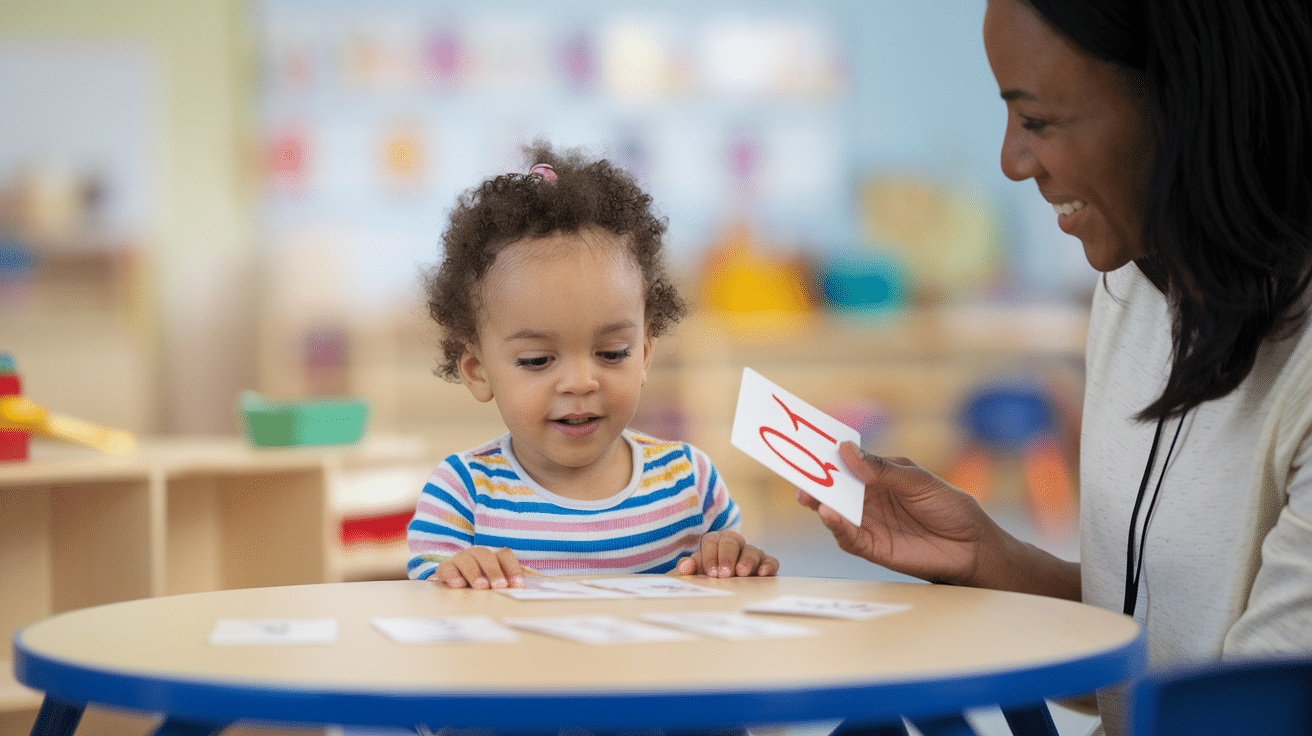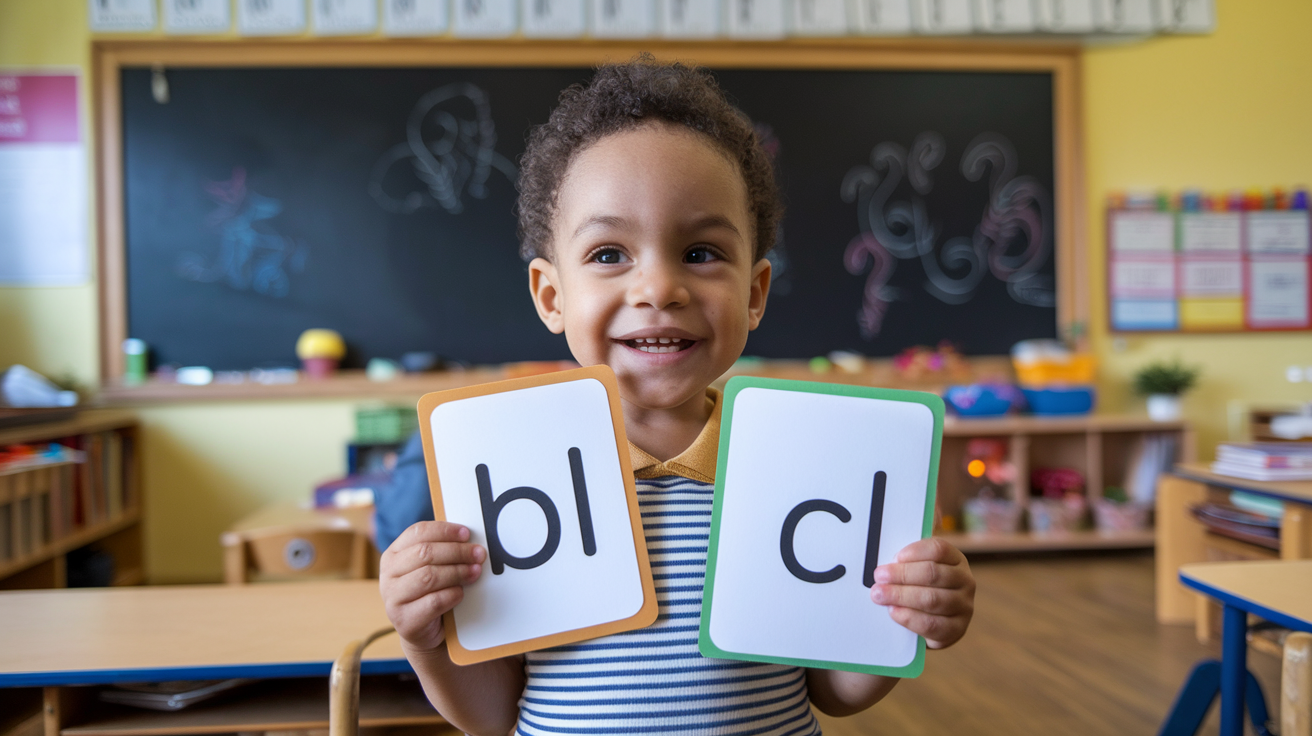Most kindergarten teachers find teaching letter sounds simple, until they reach blends for kindergarten. Young learners often struggle when two letters make a sound together.
This challenge frustrates many educators. When students don’t grasp blends, their reading progress slows, causing both teachers and children to feel stuck.
But teaching blends doesn’t need to be complicated. With the right methods, children can learn blends quickly and enjoy the process too.
This blog post provides easy, tested methods for teaching blends to kindergarten students. These methods fit into your current lessons and need few materials.
Ready to help your students read better? Let’s look at how to make blends fun and simple for your kindergarten class.
What Are Blends?

Blends are groups of two or three consonant letters that work as a team. When we say a blend, we hear the sound of each letter, but they flow together smoothly. Think of them as letter friends who like to stick close to each other.
Common blends include “bl” (as in “blue”), “st” (as in “stop”), and “tr” (as in “tree”). Other examples are “sp” in “spin,” “gr” in “grass,” and “fl” in “fly.” Three-letter blends include “str” in “string” and “spl” in “splash.”
Unlike digraphs (such as “sh” or “ch”), where the letters combine to form a new sound, in blends, each letter retains its own sound. We say them quickly together.
For kids just starting to read, blends are a big step after learning single-letter sounds. They help children move from reading simple words like “cat” to more complex words like “stand” or “flower.”
Why Are Blends Important for Kindergarten?
Blends form a key building block in how kids learn to read and write. After mastering single letter sounds, blends help students take their next big step into reading longer words.
When kids know blends, they can read many more words. Instead of just “bat” or “pin,” they can tackle “brat” and “spin.” This opens up tons of new books and stories for them to enjoy on their own.
Blends also make writing easier. Children who know blends can spell more words correctly and express their ideas better on paper. This boosts their confidence in both reading and writing tasks.
Studies show that kids who learn blends in kindergarten tend to become stronger readers by first grade. These skills create a firm base for all future learning across subjects.
In short, blends act as a bridge that helps young readers move from basic to more complex texts with ease.
Common Blends for Kindergarten
When teaching blends for kindergarten kids, it’s best to start with the most common ones they’ll see in their books. These blends often appear in words that young readers encounter in their first stories and picture books.
- L-Blends: bl (blue, black), cl (clap, clock), fl (fly, flower), gl (glue, glass), pl (play, please), sl (slide, sleep).
- R-Blends: br (brown, bread), cr (crab, cry), dr (drop, drum), fr (frog, friend), gr (green, grass), tr (tree, truck).
- S-Blends: sc (scare, school), sk (skip, sky), sl (sleep, slide), sm (smile, small), sn (snow, snack), sp (spin, spot), st (stop, star), sw (swim, sweep).
- Two-Letter Blends: ch (chair, cheese), sh (ship, shell), th (this, that), wh (what, when).
- Three-Letter Blends: spr (spring, spray), str (strong, string), scr (scream, scrub).
How to Teach Blends to Kindergarten Kids

Teaching blends for kindergarten students works best when you follow a step-by-step plan. Children need to hear, see, say, and use blends in various ways to learn them truly.
Try these methods to help your students learn this key reading skill.
Start With Sound Awareness
First, help kids notice blends in spoken words. Say words like “stop” and “play” slowly. Ask them to listen for each sound. This trains their ears to hear that two letters can work as a team.
Let them clap for each sound they hear in words. You can also use mouth mirrors to help children see how their lips and tongue move when making blend sounds. This step builds the sound skills needed for reading success.
Use Visual Aids
Show pictures of items that start with blends: blocks, frogs, trains. Put the blend letters under each picture. Point to the letters as you say the word slowly.
Make colorful cards with blends on them. Create a blend wall in your classroom where you add new blends as you teach them.
Use different colors for each letter in the blend to help kids see them as separate sounds that work together. This helps kids link the sounds they hear to the letters they see on paper.
Try Hands-On Practice
Give kids blocks or cards with letters to build blend words. Have them push the letters together as they say the sounds. Let them trace blend letters in sand or with finger paint.
Create blend puzzles where one piece has the blend and another has the rest of the word. Use play-dough to form blend letters. These touch-based methods help the learning stick, especially for active kids who need to move to learn well.
Make It Fun With Games
Making the learning process enjoyable helps young learners stay motivated and focused. When kids associate learning with fun, they are more likely to engage deeply with the material.
Fun activities allow them to develop a positive attitude toward reading and phonics, which in turn enhances their ability to grasp new concepts like blends.
Incorporate Daily Review
Set aside five minutes each day to review previously taught blends. Use quick drills where you show blend cards and have students say the sounds.
Create a “Blend of the Day” routine where you focus on one blend throughout your activities. Ask children to bring in items from home that start with the week’s focus blends.
Consistent review helps move blend knowledge from short-term to long-term memory, making it easier for children to use these skills when reading new words.
Fun Ways to Teach Blends: Activities to Engage Kindergarten Learners

Kids learn best when they’re having fun. These hands-on activities make blend practice feel like play time rather than work.
Mix these ideas into your lessons to keep students excited about learning blends:
- Blend Bingo: Create bingo cards with blend words or pictures. Call out blends and have kids mark matching items on their cards.
- Blend Hunt: Hide blend cards around the room. Kids find cards and name words that start with that blend.
- Blend Hopscotch: Draw a hopscotch grid with blends in each square. Kids say a word with that blend when they hop.
- Picture Sort: Give kids pictures to sort into blend groups. All “tr” pictures go together, all “sp” pictures in another pile.
- Blend Songs: Sing simple songs that focus on specific blends. Try “Frog on a Log” for “fr” or “Stop, Drop, Roll” for “st.”
- Blend Puzzles: Cut pictures in half. One half has the blend, the other completes the word. Kids match them.
Final Insights
Teaching blends for kindergarten students builds a strong foundation for reading. We’ve seen that blends combine two consonants where both sounds are heard but spoken quickly together.
These letter combinations help children move from simple three-letter words to more complex vocabulary. By teaching blends through sound awareness, visual aids, hands-on practice, and games, you help young learners master an essential reading skill.
Remember to start with common blends like “bl,” “tr,” and “st” before moving to trickier ones. Use fun activities and games to keep children engaged and excited about learning.
What matters most is making the learning process enjoyable. When kids have fun, they learn better and remember more.
What blend activities have worked well in your classroom? Share your success stories in the comments below! We’d love to hear which methods your students enjoyed most.




